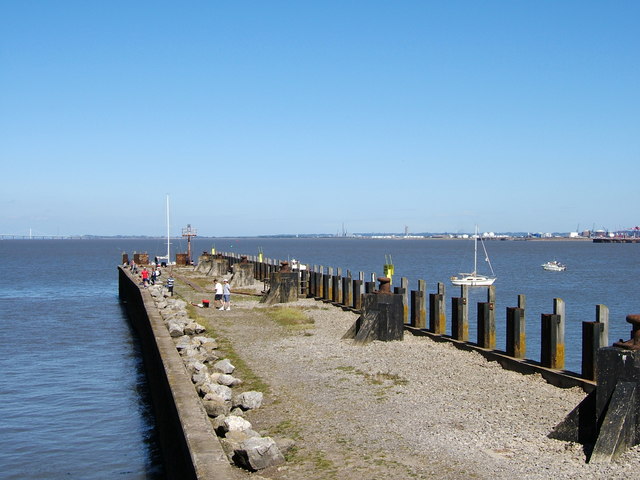|
Portishead, Somerset
Portishead () is a coastal village on the Severn Estuary, 8 miles (12 km) to the west of Bristol, but within the unitary authority, unitary district of North Somerset, which falls within the Ceremonial counties of England, ceremonial county of Somerset, England. It has a population of around 25,000, with a growth rate considerably in excess of surrounding towns. Portishead has a long history as a fishing port. As a Royal Manor it expanded rapidly during the early 19th century around the docks, with supporting transport infrastructure. A Portishead power station, power station and chemical works were added in the 20th century, but the dock and industrial facilities have since closed and been redeveloped into a marina and residential areas. Portishead was also the telephone control centre used by British Telecom (BT) for non-direct dialled calls to maritime vessels, a service known as Portishead Radio. The town's population is expanding, and Portishead is now primarily a dormi ... [...More Info...] [...Related Items...] OR: [Wikipedia] [Google] [Baidu] |
Portishead And North Weston
Portishead or Portishead and North Weston is a civil parish in North Somerset, England. The parish includes the coastal town of Portishead along with the village of North Weston. The 2011 census gave the population as 23,699. As of 2017 however, the population number is estimated to be well over 25,000 with another 8,000 people expected by 2026. Governance The town council has responsibility for local issues, including setting an annual precept (local rate) to cover the council's operating costs and producing annual accounts for public scrutiny. The parish council evaluates local planning applications and works with the local police, district council officers, and neighbourhood watch groups on matters of crime, security, and traffic. The parish council's role also includes initiating projects for the maintenance and repair of parish facilities, such as the village hall or community centre, playing fields and playgrounds, as well as consulting with the district council on the m ... [...More Info...] [...Related Items...] OR: [Wikipedia] [Google] [Baidu] |
Cadbury Camp
Cadbury Camp is an Iron Age hill fort in Somerset, England, near the village of Tickenham. It is a scheduled monument. Although primarily known as a fort during the Iron Age it is likely, from artefacts, including a bronze spear or axe head, discovered at the site, that it was first used in the Bronze Age and still occupied through the Roman Britain, Roman era into the sub-Roman period when the area became part of a Celts, Celtic kingdom. The name may mean "Fort of Cador" - Cado(r) being possibly the regional king or warlord controlling Somerset, Bristol, and South Gloucestershire, in the middle to late 5th century. Cador has been associated with King Arthur, Arthurian England, though the only evidence for this is the reference in the Life of St. Carantoc to Arthur and Cador ruling from Dindraithou (perhaps the hillfort at Dundry) and having the power over western Somerset to grant Carantoc's plea to build a church at Carhampton. Geoffrey of Monmouth invented the title 'Duke of C ... [...More Info...] [...Related Items...] OR: [Wikipedia] [Google] [Baidu] |
William II Of England
William II ( xno, Williame; – 2 August 1100) was King of England from 26 September 1087 until his death in 1100, with powers over Normandy and influence in Scotland. He was less successful in extending control into Wales. The third son of William the Conqueror, he is commonly referred to as William Rufus ( being Latin for "the Red"), perhaps because of his ruddy appearance or, more likely, due to having red hair as a child that grew out in later life. William was a figure of complex temperament, capable of both bellicosity and flamboyance. He did not marry nor have children, which – along with contemporary accounts – has led historians to speculate on homosexuality or bisexuality. He died after being hit by an arrow while hunting, under circumstances that remain unclear. Circumstantial evidence in the behaviour of those around him raises strong, but unproven, suspicions of murder. His younger brother Henry I hurriedly succeeded him as king. Historian Frank Barlow ... [...More Info...] [...Related Items...] OR: [Wikipedia] [Google] [Baidu] |
Roman Catholic Diocese Of Coutances
The Roman Catholic Diocese of Coutances (–Avranches) (Latin: ''Dioecesis Constantiensis (–Abrincensis)''; French language, French: ''Diocèse de Coutances (–Avranches)'') is a diocese of the Roman Catholic Church in France. Its Cathedral, mother church is the Coutances Cathedral, Cathedral of Coutance in the commune of Coutances in France. The diocese is suffragan of the Archbishop of Rouen and comprises the entire department of Manche. It was enlarged in 1802 by the addition of the former Diocese of Avranches and of two archdeaconries from the Diocese of Bayeux. Since 1854 its bishops have held the title of Bishop of Coutances (–Avranches). The Bishop of Coutances exercised ecclesiastical jurisdiction over the Channel Islands, mostly in Alderney where the Bishop also held partial authority over the Leader of Alderney, until the Protestant Reformation, Reformation, despite the secular division of Normandy in 1204. The final rupture occurred definitively in 1569 when Quee ... [...More Info...] [...Related Items...] OR: [Wikipedia] [Google] [Baidu] |


